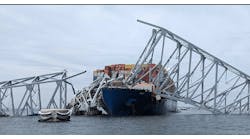Last week I blogged from Dematic’s Material Handling and Logistics Conference about a session on the retail industry’s vision of “The 2020 Future Value Chain.” The presenter offered highlights of how retailers and manufacturers must prepare for trends that are shaping their supply chains. I personally appreciated two of the predictions listed in this study:
• The aging population will have economic and political consequences related to the amount of money spent on necessities like food and drink, and the type of delivery services, store formats and locations offered to older consumers.
• The increased impact of consumer technology adoption will be reflected not only in consumers’ own behavior but also in their ability to influence the buying behavior of other consumers as the use of social and digital media continues to spread.
The first prediction acknowledged what many Baby Boomers like me already know: it’s getting harder to read small print and retailers and their suppliers should consider redesigning labels and signage to make their customers' lives easier. The second prediction can be read as a warning in light of the first prediction: If you do make our lives more difficult, we can share our frustration with fellow consumers via a growing number of “frustration outlets,” also known as our Facebook Forums.
Smart retailers scan these forums constantly to get good ideas. I'm using MH&L's forum to make my own contribution.
I had a shopping experience at my local grocery store this past Saturday that made me want to throw that second prediction in the store manager’s face. You know those BOGO deals grocery store chains advertise to win new customers and retain old ones? The grocery store I frequent was filled with “Buy-One, Get-One” deals this weekend. The signs posted all over the store were in big, bold print, like this one in the produce department: “Virginia Ham, Buy One Pound Get the Second Pound Free!” But printed below that, in much smaller type—the type of type that doesn’t really want to be read—was this bit of legalese: “Maximum value $8.99/lb.”
As a regular shopper at this store, I happen to know that the regular price of this ham is about $4.50/lb. I may be a Baby Boomer, and my eyes may not be what they used to be, but my math is pretty good. So’s my nose, and this ham deal smelled fishy. All management did was double the value of this ham so they could offer it as a BOGO deal without losing money on it. Brilliant.
Brilliantly stupid. I could only guess that the store’s managers must have cooked this up during one of their Monday morning meetings thinking customers wouldn't look beyond the BOGO and they’d be able to preserve their sliced-thin profit margin by adopting the management philosophy of P.T. Barnum: "Nobody ever went broke underestimating the intelligence of the American people."
When I brought this to the attention of the store manager, he apologized, acknowledged it was bogus, but blamed corporate for the idea. He gave me an 800-number to lodge a complaint. So when I got home I called corporate. Glenn, of customer service, picked up. When I told him what I found in this grocer’s deli department, he tsk-tsked, asked which store I shopped and assigned me a case number. He promised I’d be contacted.
I’ll let you know if I get that call. But while I wait for it I thought I’d share this case of store-chain buck-passing with you and apply it at the supply chain level. Supply chains are also customer chains, and breaches in trust anywhere along their lengths make for weak links. Managers who don’t value this learning can trust that they'll lose their place in the 2020 value chain.
POSTSCRIPT:
Just to update you, I did get a call from Frank, manager of the grocery store I challenged on its BOGO policy. He was very polite in telling me the ham in question was a premium brand (no added water or gluten) that actually does sell normally for $7.99. So this really was a good deal, he maintained. Fine. I guess Obama would say I pulled a Romney--fired first and aimed later. Nevertheless, why didn't the store associates I fired my objection to at the time point out my error? Why did the store manager have to call me back? Perhaps he should call those associates into a conference room and clue them in on the qualities of the product lines they stock. I, for one, appreciated his tutorial about the diversity of his store's inventory. I'm sure they would too.
Related Articles:
Economic Threats to Recent Retailer Gains
Food Industry Reports Benefits of Track-and-Trace Technology


